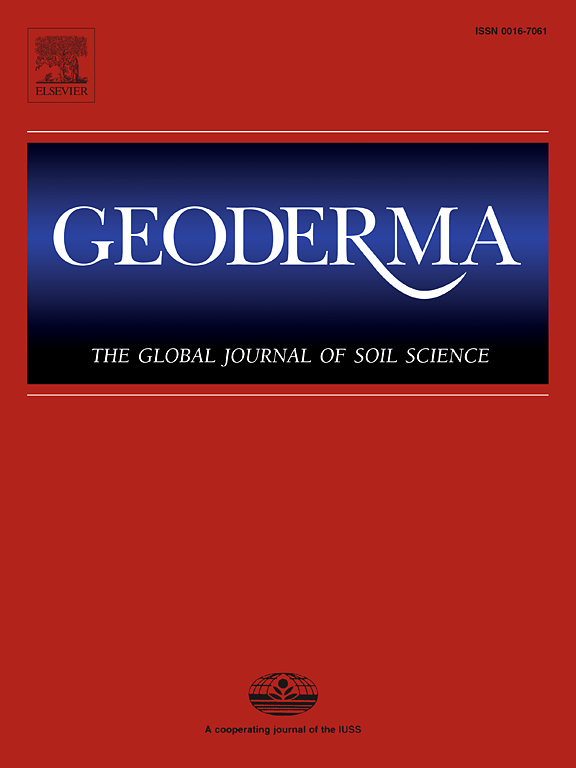Monitoring long-term peat subsidence with subsidence platens in Zegveld, The Netherlands
IF 5.6
1区 农林科学
Q1 SOIL SCIENCE
引用次数: 0
Abstract
Peat oxidation in peat meadow areas is causing greenhouse gas emissions as well as land subsidence. Due to yearly fluctuations in soil surface level, long-term monitoring is needed to determine long-term net subsidence rates. In the experimental peat-meadow farm at Zegveld (NL) subsidence platens were installed in 1970 in a field with low ditchwater level, and in 1973 in a field with high ditchwater level. Platens were installed at 7 different depths, allowing to investigate where in the peat profile subsidence occurs. Elevation of platens as well as soil surface has been measured with surveyor’s levelling each year at the end of winter, so that a long timeseries up to 2023 is available. Analysis showed that surface level in the field with high ditchwater level subsided by 24 cm in 50 years (4.8 mm/yr), while in the field with low ditchwater level this was 31 cm in 53 years (5.8 mm/yr). Results also indicated that in the field with low ditchwater level, most subsidence due to permanent shrinkage and peat oxidation occurred between 40 and 100 cm depth, while for the other field this was between 0 and 20 and between 40 and 60 cm depth. Finally, in 2023 subsidence was still observed under continuously saturated conditions at 140 cm depth. Presumably, in the aerated part of the profile peat oxidation and the associated earthification process is the main cause of subsidence, while the observed subsidence in the saturated soil at 140 cm depth must be due to other processes, such as consolidation and creep.
利用沉降板监测荷兰泽格维尔德长期泥炭沉降情况
泥炭草甸地区的泥炭氧化正在造成温室气体排放和土地沉降。由于土壤表面水平每年都有波动,因此需要进行长期监测,以确定长期净沉降率。泽格维尔德(荷兰)的泥炭草甸实验农场于 1970 年在沟水位较低的田地和 1973 年在沟水位较高的田地分别安装了沉降板。压板安装在 7 个不同的深度,以便调查泥炭剖面中发生沉降的位置。每年冬季结束时,测量人员都会对压板和土壤表面的标高进行测量,因此可以获得直至 2023 年的长期时间序列。分析表明,沟水位高的田块地表在 50 年内下降了 24 厘米(4.8 毫米/年),而沟水位低的田块在 53 年内下降了 31 厘米(5.8 毫米/年)。结果还表明,在沟水位较低的田块,由于永久收缩和泥炭氧化造成的沉降大多发生在 40 厘米至 100 厘米深之间,而在另一块田块,沉降则发生在 0 厘米至 20 厘米深和 40 厘米至 60 厘米深之间。最后,在 2023 年,在 140 厘米深的持续饱和条件下仍观察到下沉现象。据推测,在剖面的通气部分,泥炭氧化和相关的土化过程是导致沉降的主要原因,而在 140 厘米深度的饱和土壤中观测到的沉降则一定是由于其他过程造成的,如固结和蠕变。
本文章由计算机程序翻译,如有差异,请以英文原文为准。
求助全文
约1分钟内获得全文
求助全文
来源期刊

Geoderma
农林科学-土壤科学
CiteScore
11.80
自引率
6.60%
发文量
597
审稿时长
58 days
期刊介绍:
Geoderma - the global journal of soil science - welcomes authors, readers and soil research from all parts of the world, encourages worldwide soil studies, and embraces all aspects of soil science and its associated pedagogy. The journal particularly welcomes interdisciplinary work focusing on dynamic soil processes and functions across space and time.
 求助内容:
求助内容: 应助结果提醒方式:
应助结果提醒方式:


